Tucked away in the northwest corner of the Ueno grounds of the Tokyo National Museum stands the Gallery of Horyuji Treasures, a modern structure with straight lines of glass and steel, fronted by a soothing reflecting pool. If you didn’t go looking for it, you might not even realize it was there, yet this elegant gallery houses a collection of ancient Buddhist and other artworks unlike any other in Tokyo. The newly remodeled mezzanine level has been dubbed the “Digital Gallery of Horyuji Treasures” and features rotating exhibitions with interactive digital content to bring modern audiences closer to the masterpieces of the collection. The exhibitions are supported by the Agency for Cultural Affairs, Government of Japan, through the Japan Arts Council.
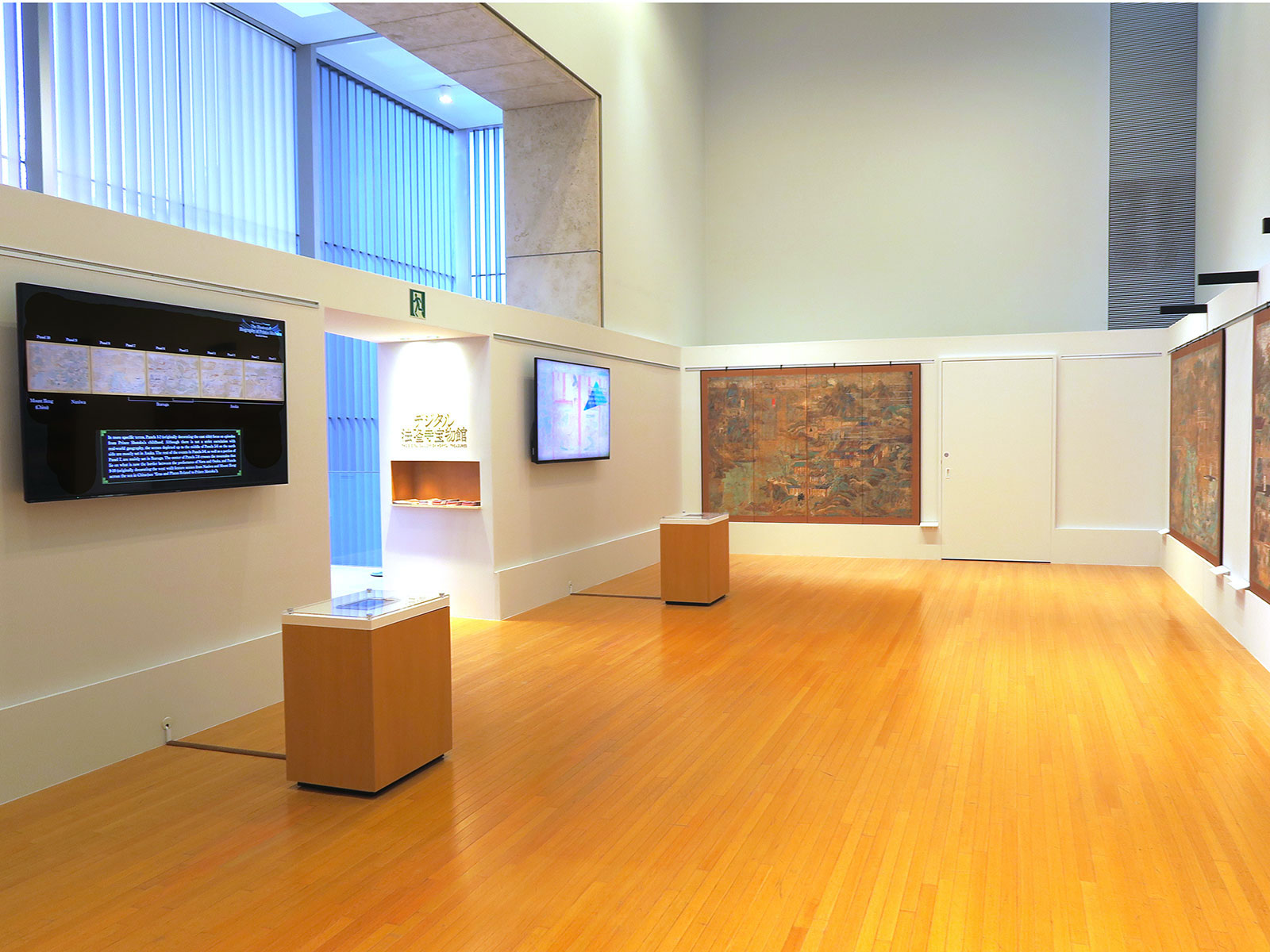
Nara’s Horyuji temple is the first site in Japan to receive a UNESCO World Heritage designation (at the same time as Himeji Castle in December 1993). It is an historically important temple for many reasons, largely related to its founder, Imperial Prince Shotoku (574-622). The prince is a significant figure in Japanese history. He was a devout Buddhist who was active in promoting the early spread of Buddhism across Japan. He also wrote The Seventeen-Article Constitution, one of the earliest written constitutions in the world, and played an active role in the government of the day, including serving as regent for his aunt, Empress Suiko (554-628), for nearly 30 years.
Thanks to Prince Shotoku’s early patronage, Horyuji became a major center of Buddhist learning and teaching and remains a popular pilgrimage destination even after thirteen centuries. Needless to say, the temple was responsible for creating and collecting major works of Buddhist art over the centuries. In 1878, 319 pieces from Horyuji’s collection were presented by the temple to Emperor Meiji (1852-1912) as a gift. This artwork eventually became national property and is housed in the Gallery of Horyuji Treasures.
From January 31 to July 30, 2023, the Digital Gallery exhibition presents full-sized photographic reproductions of a ten-panel “Illustrated Biography of Prince Shotoku”. In addition to the rare opportunity to see all ten panels together in an arrangement similar to the way the originals were once displayed at Horyuji, touch panels and 70-inch monitors allow visitors to examine digital versions of the paintings and enlarge particular scenes they want to scrutinize more closely. The detail of attire, buildings, people and even facial expressions are striking, especially when enlarged on screen.
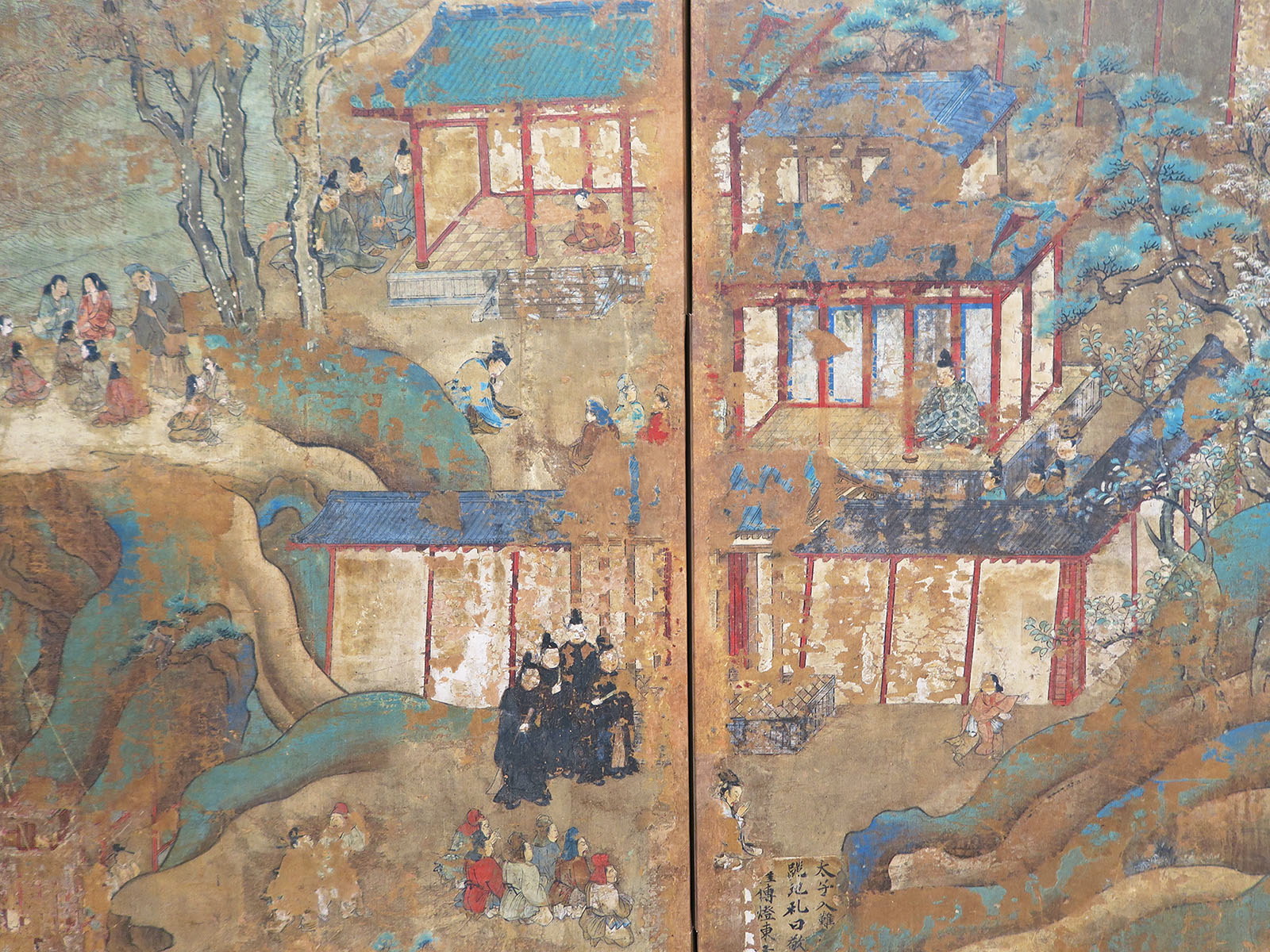
The original paintings, mineral pigment paints on silk, were done in the early eleventh century, nearly four and a half centuries after the prince’s death. They are particularly fine examples of the Yamato-e genre in Japanese painting, containing multiple detailed scenes separated by clouds or geological features. The panels relate various famous incidents from the life of Prince Shotoku, who is revered by many as an incarnation of the Buddha.
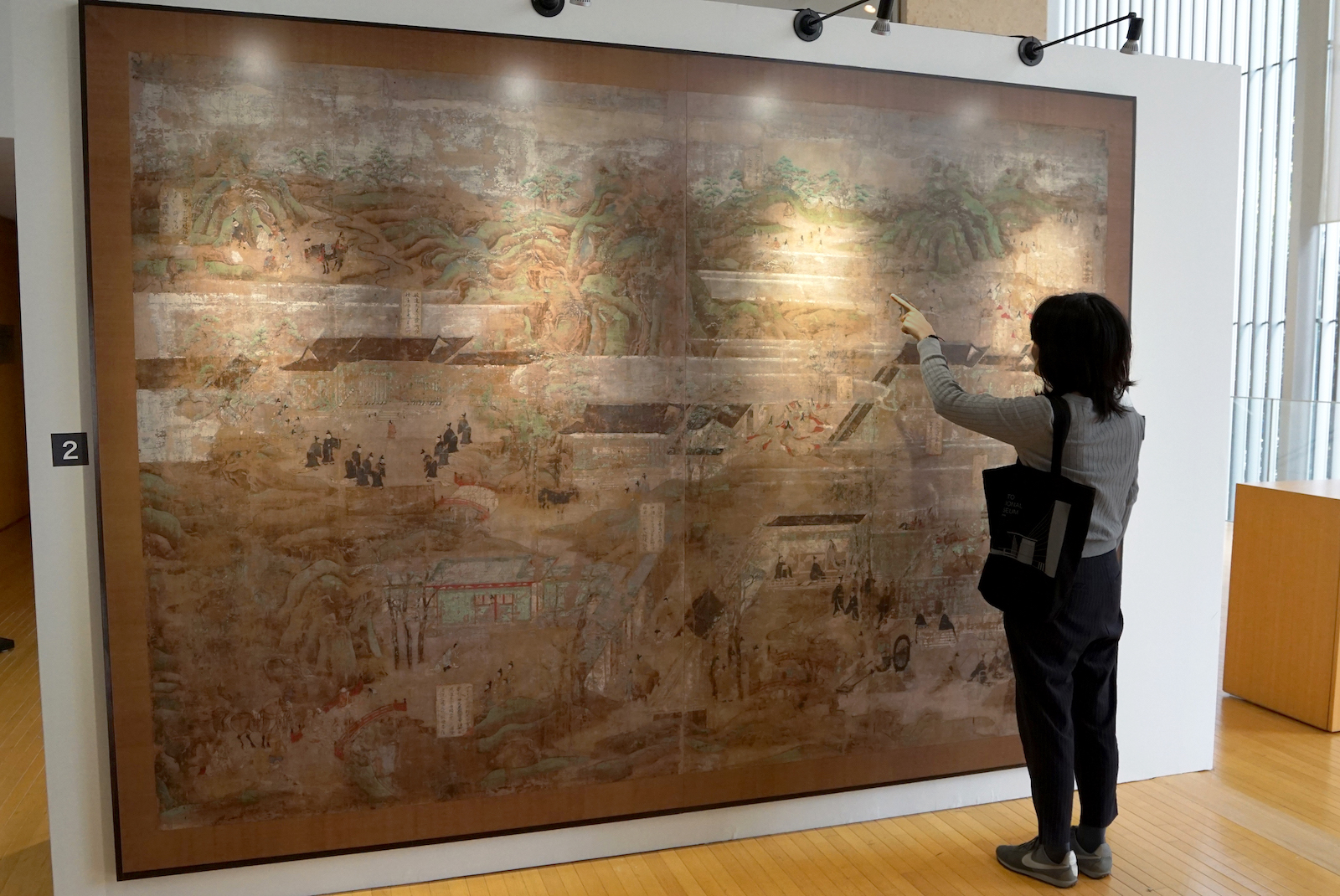
Some of the incidents depicted are based on legends told to bolster that belief, showing the prince as an 11-year-old child able to levitate and, in another scene, to listen to 36 children speak simultaneously and repeat their words back to them. There is a striking scene of the prince in his twenties riding a black horse that appears to be flying to the top of Mt Fuji. Prince Shotoku’s equestrian and archery skills were said to be super-human, as demonstrated by the flying horse. In a scene from the prince’s early forties, he watches as a Korean scholar teaches Gigaku to a group of Japanese courtiers.
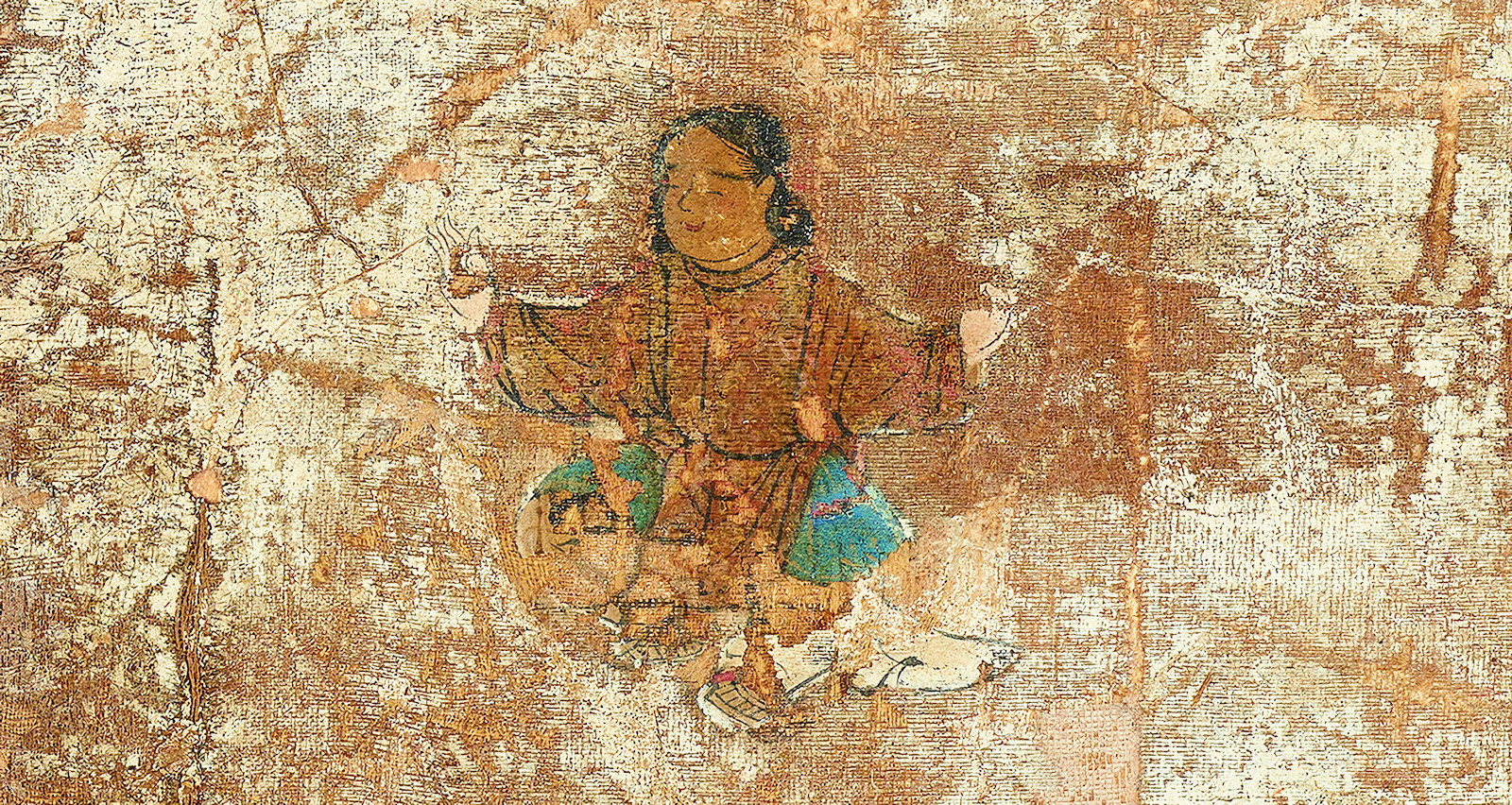
Gigaku is a now-lost Buddhist performing art. Little is known about the art form itself, except that it involved music, dance, pantomime and masked performances that probably told Buddhist stories or taught Buddhist philosophies. The gallery holds more than two dozen surviving seventh and eighth century wooden Gigaku masks, about which much more is known. The masks are kept in a climate-controlled vault on the ground floor which is only open two days a week, Friday and Saturday, because of the rare and fragile nature of the masks. Time your visit carefully if you want to see these treasures! In spite of their age, the workmanship of the masks is immediately obvious. Original color pigments, now faded and worn, can still be seen on many. The masks largely depict historical or mythical characters.
Two of the masks have been reproduced by craftsman as they would have been when first made at the end of the seventh or early eighth century. One, called “The Lady of Wu” is of a Chinese lady with pale skin, her black hair in an ornate dressing. This reproduction is currently displayed on the mezzanine level and is a sharp contrast to the ancient original in the ground floor vault. A Gigaku costume has also been reproduced, based on ancient fragments of an original costume from Horyuji, now preserved in the museum. The weave, color and pattern of the fabric are all noteworthy.

From August 1, the content of the Digital Gallery will change to feature a different set of Buddhist murals that once adorned the Kondo Hall at Horyuji. Those paintings, which dated from the late seventh or early eighth century, were severely damaged in a 1949 fire. Thanks to a careful photographic record that had been made in 1936 and recent digitalization of those glass photographic plates, large panel reproductions will form the core of the exhibition. Visitors will again be able to use the digital viewer to explore and magnify these images. At the same time, the other Gigaku mask reproduction--a Garuda bird head--and a reproduction of a different costume will also be displayed.
Don’t forget to enjoy the rest of the Gallery. The main hall on the ground floor contains intricate gilded bronze Buddhist statuary on pedestals to allow viewing from all sides. On the second floor are rooms containing ancient wooden objects, metalware, calligraphy and even textiles. The items span a thousand years, dating from the seventh to the seventeenth century. A surprising number of the oldest objects were made in China and even as far away as ancient Persia, indicating the extent to which the ancient Japanese had international trade contacts.
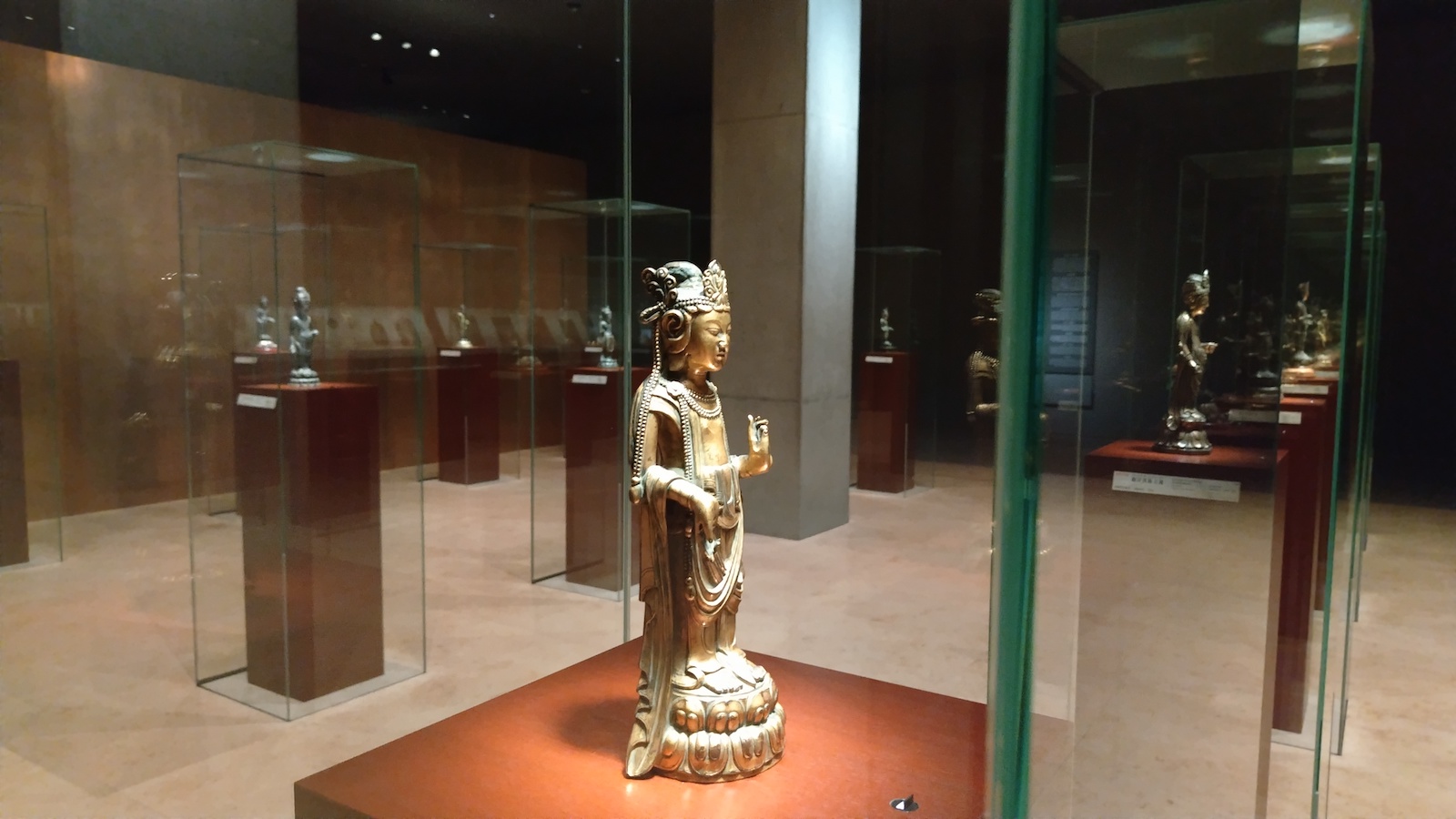
Entry to the Gallery of Horyuji Treasures is included in the price of admission to the Tokyo National Museum (¥1,000; free for those under 18 and over 70).
The museum hours are 9:30 a.m. to 5 p.m. (last entry at 4:30). The museum is closed Mondays except on national holidays, when the museum closes on Tuesday instead. Check the Gallery website for more details.
Vicki L Beyer, a regular Japan Today contributor, is a freelance travel writer who also blogs about experiencing Japan. Follow her blog at jigsaw-japan.com.
© Japan Today Take our user survey and make your voice heard.
Take our user survey and make your voice heard.















No Comment
Login to comment